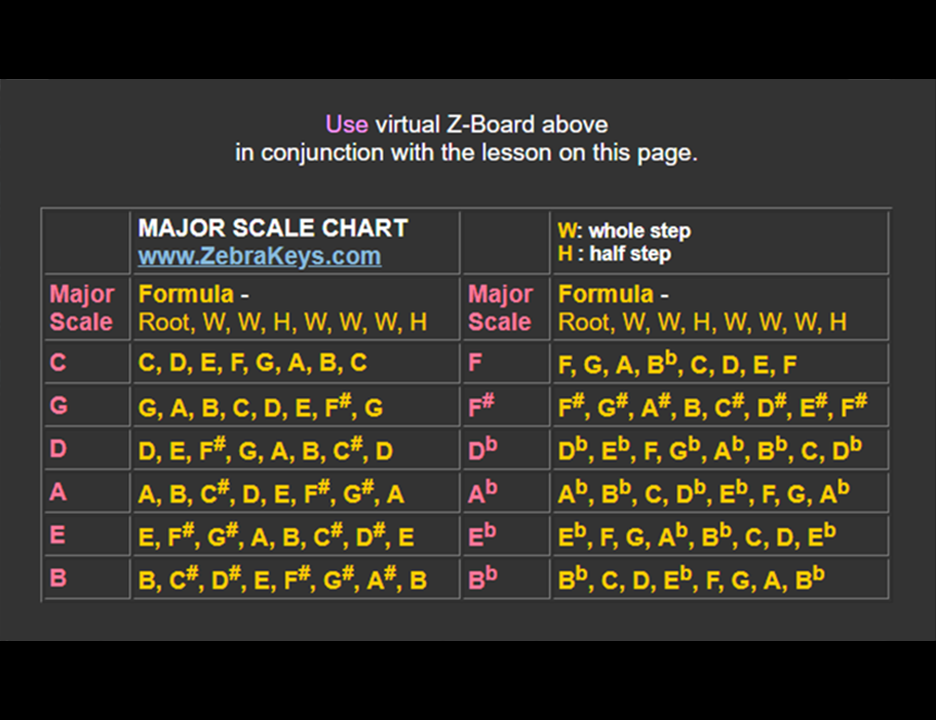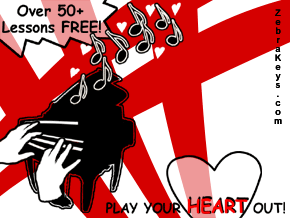Recommended
Categories
Music Theory
Lesson 13 - Major Scale |
|---|
I. Index1. Introduction II. Content1. IntroductionIn this lesson, you will learn about the major scale. The major scale is used to create most of the popular songs you hear on the radio today as well as many pieces of classical music.2. Playing the Major Scale Starting on CSince there are 12 different key names on the piano keyboard, there are 12 possible major scales. Let's first look at a major scale that starts on C, called a C major scale. The C major scale is the easiest major scale to play since it is made up of only white keys.Below are the notes of the C major scale. C, D, E, F, G, A, B, C Below is an animation of the C major scale being played. 3. Other Names for Notes of the Major ScaleBesides naming the notes of the major scale by letter names (i.e. C, D, E, F, G, A, B), you can name the notes based on its position in the major scale. This is useful when talking about major scales in general - not just about the C major scale specifically. For example, the first note of a major scale can be represented by the Roman numeral (I). It can be called the Root and also the Tonic. Below are a list and an illustration for alternative note names for the major scale.I_________Root_________Tonic 4. Understanding How the Major Scale is ConstructedThe major scale is made up of whole steps and half steps. A half step is any two notes with no notes between them. A whole step is any two notes with one note between them. Take a look at the illustration below of the C major scale and notice where the half steps and whole steps are located. The keys of the piano keyboard in the illustration below have been spread out in order for you to easily see where the half steps and whole steps are located.The whole steps are located between C/D, D/E, F/G, G/A, and A/B. The half steps are located between E/F, and B/C. You can use this pattern of whole steps and half steps to find the major scale on all 12 keys. Below is a list of the major scale starting on all 12 keys. A, B, C#, D, E, F#, G#, A Bb, C, D, Eb, F, G, A, Bb B, C#, D#, E, F#, G#, A#, B C, D, E, F, G, A, B, C Db, Eb, F, Gb, Ab, Bb, C, Db D, E, F#, G, A, B, C#, D Eb, F, G, Ab, Bb, C, D, Eb E, F#, G#, A, B, C#, D#, E F, G, A, Bb, C, D, E, F F#, G#, A#, B, C#, D#, E#, F# G, A, B, C, D, E, F#, G Ab, Bb, C, Db, Eb, F, G, Ab 5. How Does the Major Scale Apply to SongsA majority of popular songs as well as classical tunes are written in the major scale. When a song is written in a major scale, most if not all of its melody notes as well as harmony chord notes come from that scale.6. ConclusionThe major scale can be used to create a majority of the popular songs you hear on the radio. What gives the major scale its identity is its pattern of whole steps and half steps. In this lesson, you reviewed the C major scale. There is a major scale for each of the 12 keys.
Custom Search
|
Recommended Stuff
Music Theory for Beginners
Lesson 12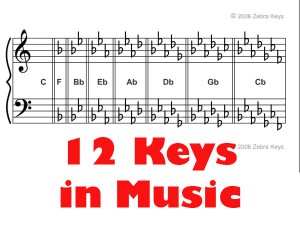 |
Lesson 13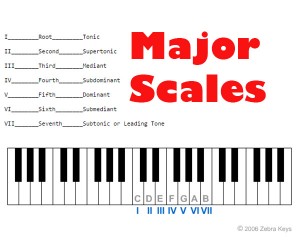 |
Lesson 14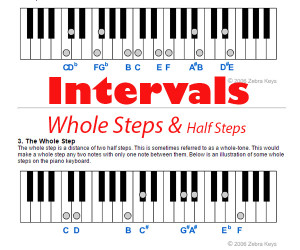 |
Lesson 14 - Intervals
What are intervals in music? Learn the intervals (the Whole step and Half step) - the smallest interval in western music is Half Step or Half Note)|
Lesson 15 Chords of Major Scale 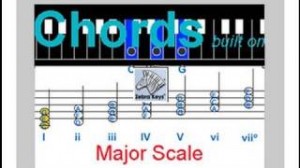 |
Lesson 16 Circle of Fifths 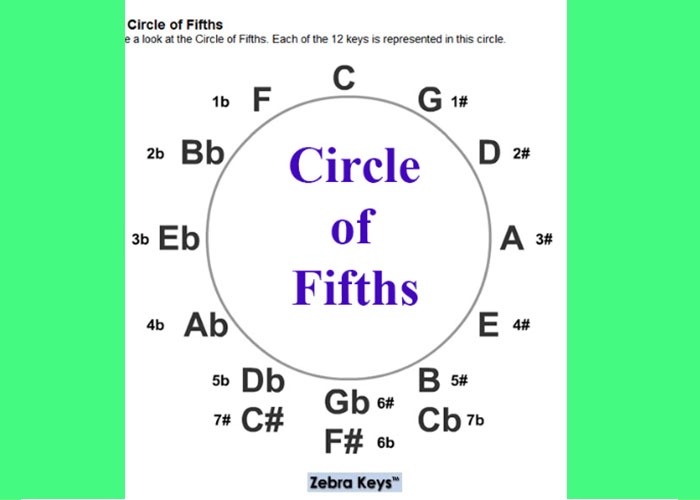 |
Lesson 12 - 12 Keys In Music
Lesson 13
Major Scale
Learn how Major Scales are built, and learn how to play Major Scale in the key of C in the video below| Formula of Major Scale is: |
| R, W, W, H, W, W, W, H |
| (R = Root Note, W = Whole Step, H = Half Step) |
| Notes in the Key of C are: |
| C, D, E, F, G, A, B, C |
Click below to watch how to play major scale in different keys
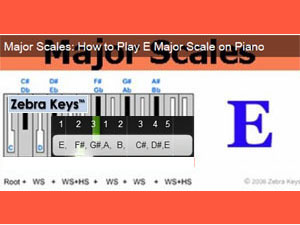 |
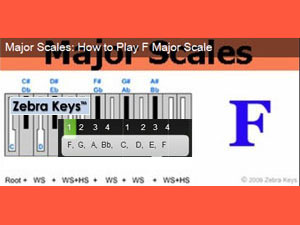 |
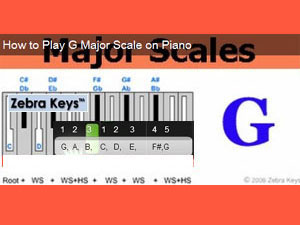 |
 |
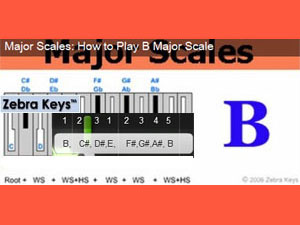 |
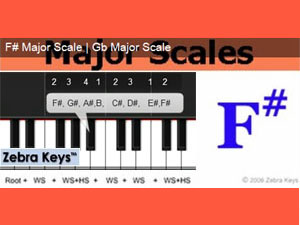 |
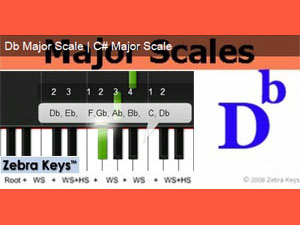 |
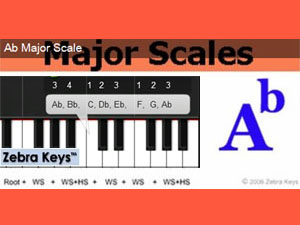 |
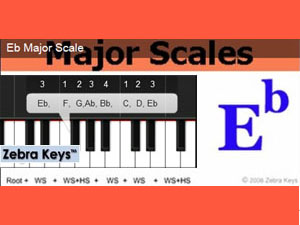 |
 |
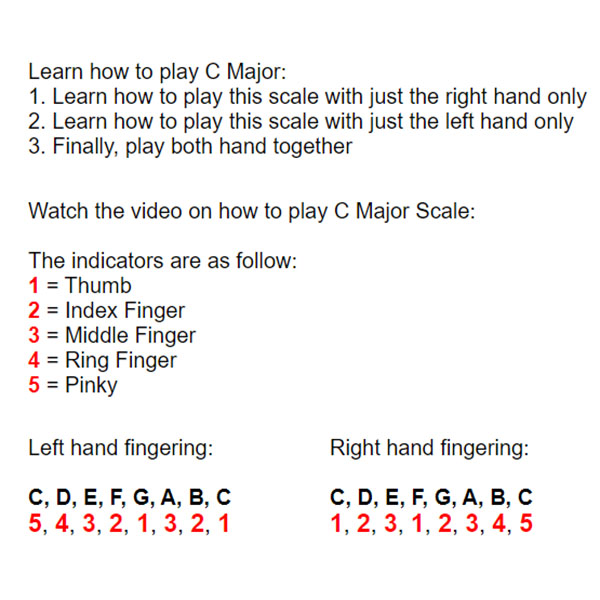
Lesson 15 -
Chords of the Major Scale
Here you will learn about Chords that are built on a Major Scale
Lesson 16 -





